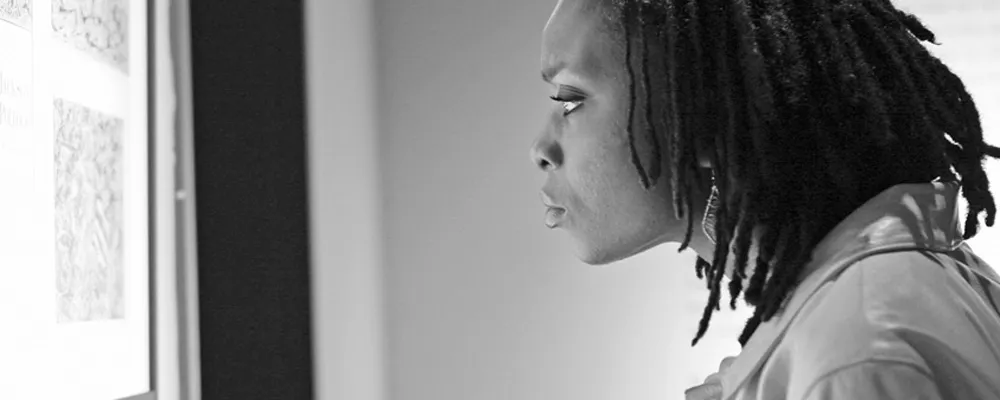- Home
- >
- APU Articles
- >
- News Article
Art and Soul
January 14, 2015 | Written By Cynndie Hoff

Whether it conveys a literal message or elicits a primitive reaction, art moves the viewer to feel something. Which begs the questions: Why does that matter? Does it serve a purpose in society? And what is art’s place in the Christian academy?
Whether sculpture, architecture, paintings, music, dance, crafts, or fashion, human creativity inevitably expresses itself through works of art, and these pieces reveal more about the artist, the culture, and the state of humanity than any other indicator. As such, art represents an invaluable thread in the cultural fabric of society worthy of reverent appreciation as well as serious scholarly study—especially in the context of Christian higher education. Though the relationship between the Church and the arts has fluctuated throughout history, from full financial support to utter abandonment that disavows the arts as an expression of hedonism, the on again/off-again association belies the incontrovertible truth: Arts and the Church share a divine symbiotic connection. Throughout the Old and New Testaments, God repeatedly reveals His appreciation for things of beauty, and in Exodus 31:1–11, He commissions artists and artisans whom He has blessed with special talents to create beautiful works of art for use in worship, including the Ark of the Covenant. Given His specific instructions, God clearly delights in color, texture, form, and beauty—art.
As beings formed in the image of the Creator, Christians bear not only the capacity, but also the calling, to reflect and model God’s beauty and Truth. Christian universities, therefore, stand uniquely equipped to impact the direction and influence of the art community. “Art is visual communication,” said G. James Daichendt, Ed.D., associate dean and professor in the College of Music and the Arts’ (CMA) School of Visual and Performing Arts. “It engages us on multiple levels. With the Creator as our model, we can participate in all aspects of life while remaining firmly grounded in the anchor of our faith. Art is essential to understanding our culture and interpreting its vocabulary. Clearly supporting that intrinsic value in art and art education, APU has developed an amazing environment where Christian artists can thrive.”
As testament to that, Azusa Pacific boasts the largest art department of all the schools in the Council of Christian Colleges & Universities and is the only one with graduate degrees: a Master of Fine Arts in Visual Art (MFA) and an Online Master of Arts in Art History, Theory, and Criticism. High-caliber programs and faculty not only attract remarkable students, but they also garner the attention of foundations and philanthropists seeking to advance the relationship between the arts and the Church. The Windgate Charitable Foundation, known for supporting art and art history programs throughout the country, recently presented APU with the most significant gift in CMA history: a challenge grant of $3 million to establish scholarships for art majors and sponsor a graduate program that equips student leaders through a bold online initiative in art education. This remarkable opportunity from Windgate reflects the strength of a 20-year relationship between the foundation and APU, and mirrors the Board of Trustees’ value of art in culture and higher education. The $1.5 million in matching funds, to be raised by the university by April 2016, will increase the total art endowment to $4.5 million.
“This pledge serves as a landmark moment in the early formation of the College of Music and the Arts,” said Stephen P. Johnson, DMA, dean. “Raising an additional $1.5 million to meet the challenge grant provides a catalyst to engage the greater arts community and share the story of art education at Azusa Pacific University.”
Given the freedom found in Jesus, Christians engage in the culture of the day as the Apostle Paul did, while maintaining spiritual integrity. Rather than isolate themselves, Azusa Pacific art students use their gifts and talents to express the Christian worldview of hope and redemption. They discover ways to communicate real life, real people, real emotions.
The Windgate gift helps equip the next generation of Christian artists to reclaim the lead in contemporary art; to offer an answer to the desperate, the disillusioned, the hopeless; and to create exceptional art that addresses all aspects of humanity while unapologetically reflecting the One who endowed them with the gifts to do so.